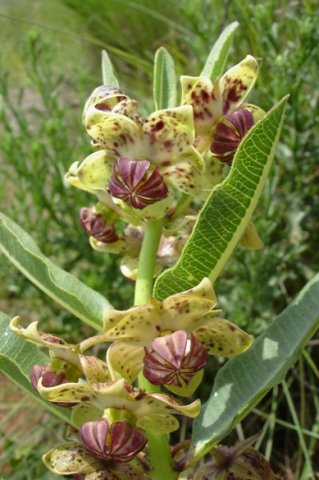Pachycarpus

Author: Ivan Lätti
Photographer: Judd Kirkel Welwitch
Pachycarpus is a genus of erect, usually robust perennials growing from tuberous rootstocks or spindle-shaped roots. The genus forms part of the Apocynaceae or carrion flower family and the plants contain milky sap like many members of this family.
The simple, opposite leaves are often elliptic. They have short stalks or are stalkless and pinnately nerved.
The flowers grow from nodes near stem-tips, or at stem-tips, in umbels comprising from two to several flowers held upright or nodding. The sepals usually have scales in the base and have fringed margins or hairy surfaces. The corollas are usually deeply five-lobed. They are often broadly, bell-shaped, cup-shaped or star-shaped. The variable, five-lobed coronas inside the corollas arise from the base of the staminal column or near it and have flattened crests, sometimes over the style heads or spreading horizontally.
The anthers have two locules, usually resting on the style heads that are dome-shaped or crater-like. The hanging pollinia are oblong to somewhat ovate, the pollen mass appendages slender and stalk-like.
The spindle-shaped, smooth, fruit follicles are usually single, losing one of the pair during development, the oblong seeds brown. The generic name, Pachycarpus, is derived from the Greek words, pachus meaning thick and karpos meaning fruit, referring to the thick skins of these follicles.
There are about 30 species of Pachycarpus in Africa, 25 of which in the easterly parts of southern Africa, mostly in tall grassland. Some of the plants are very poisonous, while some are used in traditional medicine.
The plant in picture is Pachycarpus natalensis (Leistner, (Ed.), 2000; Manning, 2009).

